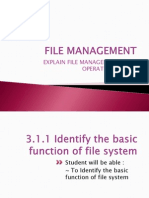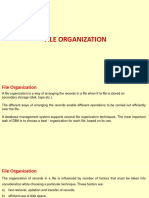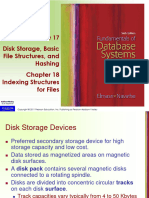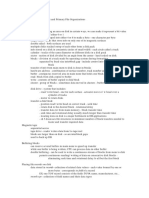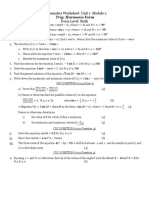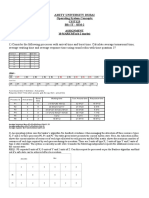0% found this document useful (0 votes)
67 views18 pagesDisk Storage, Basic File Structures, and Hashing
This document discusses various techniques for organizing records in database files, including heap files, sorted files, and hashed files. Heap files store records in the order they are inserted, making insertion efficient but searching slow. Sorted files maintain a key-sorted order for faster searching and retrieval. Hashed files use a hash function to map records to disk blocks, providing direct access but requiring rehashing if the file size changes.
Uploaded by
Hasnaa AdelCopyright
© © All Rights Reserved
We take content rights seriously. If you suspect this is your content, claim it here.
Available Formats
Download as PPTX, PDF, TXT or read online on Scribd
0% found this document useful (0 votes)
67 views18 pagesDisk Storage, Basic File Structures, and Hashing
This document discusses various techniques for organizing records in database files, including heap files, sorted files, and hashed files. Heap files store records in the order they are inserted, making insertion efficient but searching slow. Sorted files maintain a key-sorted order for faster searching and retrieval. Hashed files use a hash function to map records to disk blocks, providing direct access but requiring rehashing if the file size changes.
Uploaded by
Hasnaa AdelCopyright
© © All Rights Reserved
We take content rights seriously. If you suspect this is your content, claim it here.
Available Formats
Download as PPTX, PDF, TXT or read online on Scribd
/ 18





















